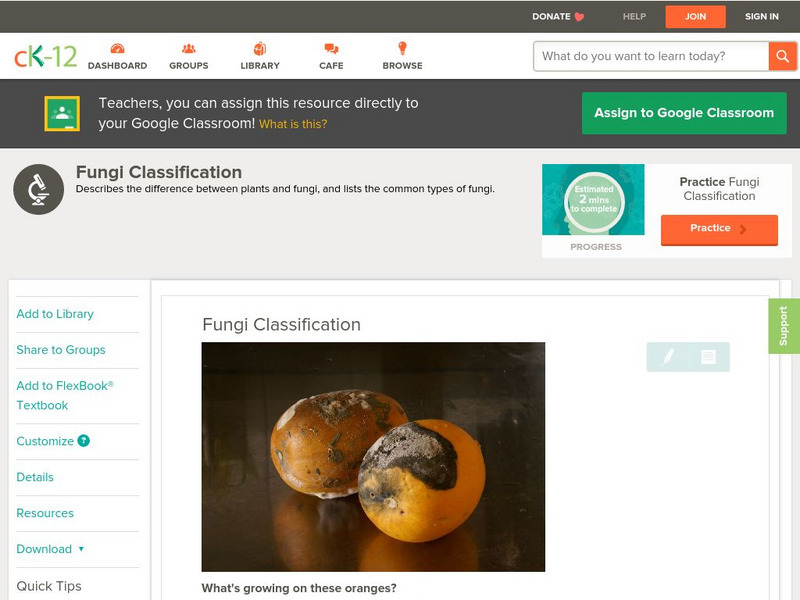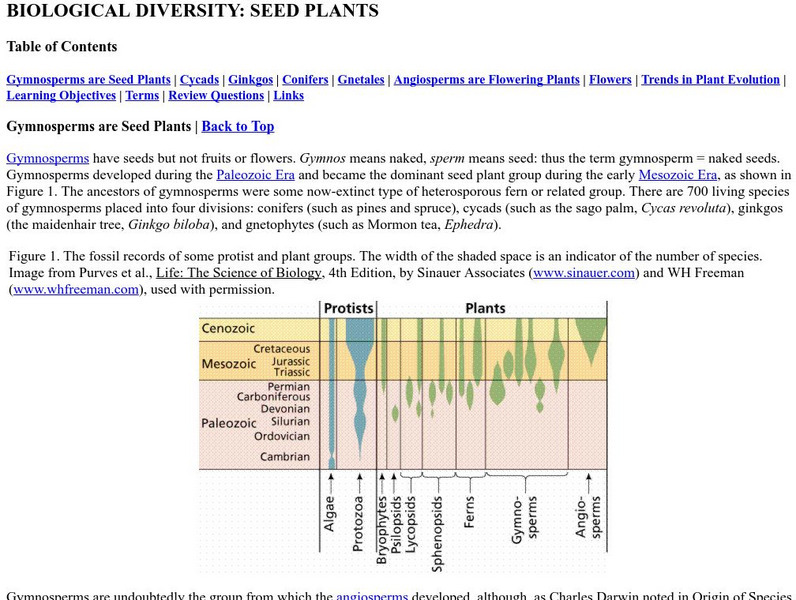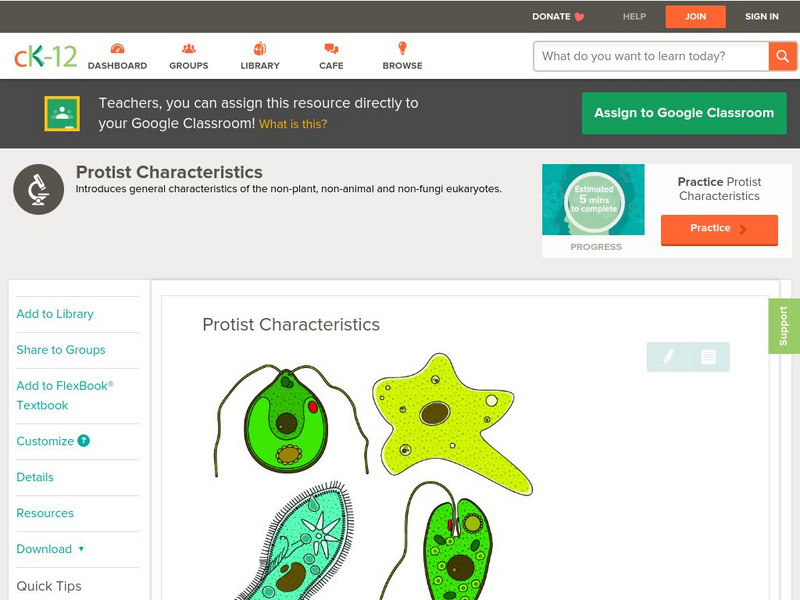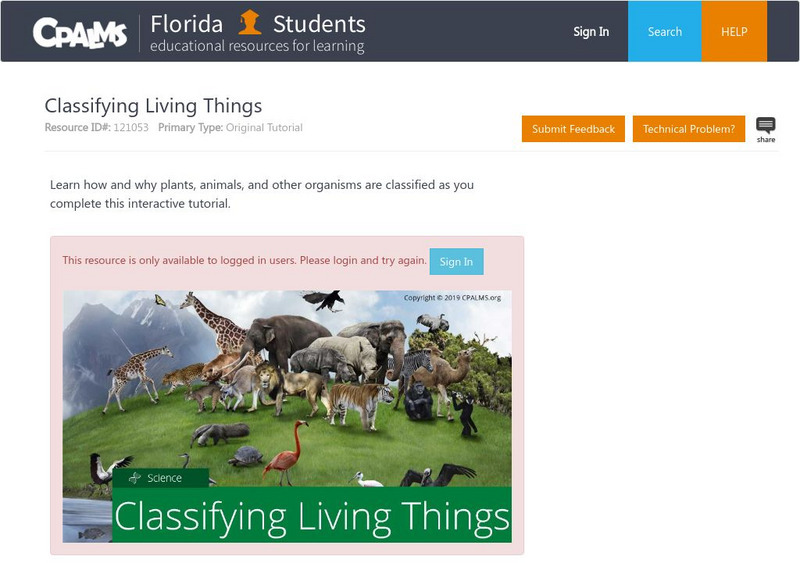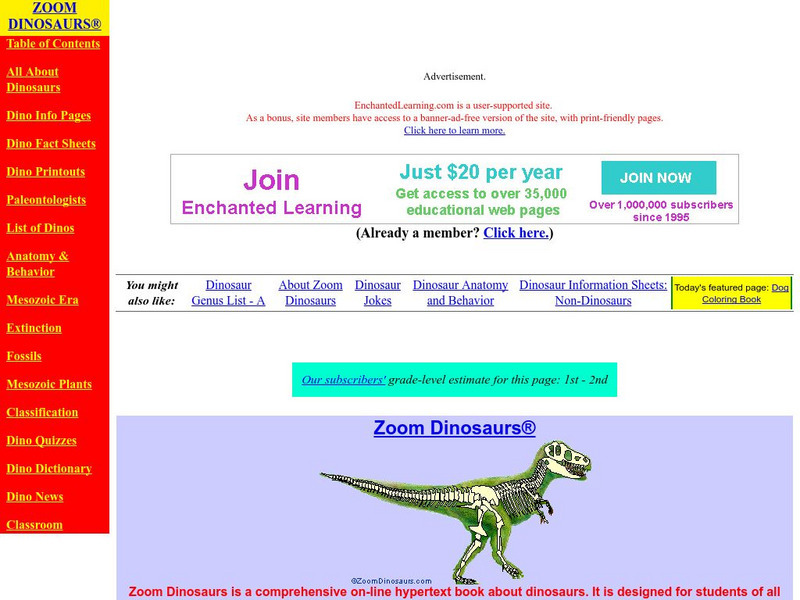Encyclopedia of Earth
Encyclopedia of Earth: Botany: Mangrove Ecology
Extensive article on mangroves. Covers classification, physical characteristics, life cycle, habitat, economic value, and natural and human threats to their survival.
Encyclopedia of Earth
Encyclopedia of Earth: Biodiversity: Fern
Explains what differentiates ferns from other plants, their physical characteristics, taxonomy, life cycle, how they evolved, and where they occur.
Other
Alternative Classifications of Life
The Linnaean system (1758) classified all macroscopic living organisms as either Animals or Plants, based on whether they moved [anima, with a soul] or not. Thus, Fungi were included as plants. With the invention of the microscope and...
Science Education Resource Center at Carleton College
Serc: Introduction to Dichotomous Keys
This lesson serves as an introduction to the classification of plants and animals or trees. Students will investigate how to classify objects based on their similarities and differences. They will use technical writing to explain their...
CK-12 Foundation
Ck 12: Life Science: Fungi Classification
[Free Registration/Login may be required to access all resource tools.] Scientists used to think that fungi were members of the plant kingdom. They thought this because fungi had several similarities to plants. However, there are a...
Biology Pages
Kimball's Biology Pages: Mosses and Liverworts
A lesson on the classification of mosses and liverworts as well as the physical make up and similarities of the species.
Alabama Learning Exchange
Alex: Wanted Dead or Alive!
In this instructional activity students will identify the characteristics of living and nonliving things.
Alabama Learning Exchange
Alex: Botany Scavenger Hunt Where's the Ginkgo?
Students use a science nature journal to log in plants native to Alabama. They sketch pictures of leaves, identify the special characteristics of the plant, and describe the environment where it was found. They also research special...
Estrella Mountain Community College
Online Biology Book: Biological Diversity: Seed Plants
An in-depth reference explaining the role of seed plants in biological diversity. Photographs and labeled diagrams help learners with understanding.
University of Guelph
Introduction to Invertebrate Biodiversity: Fungi
Find out more about fungi when you check out this comprehensive site. This resource provides an introduction and information on morphology, reproduction and the importance of fungi. Don't miss out on this fascinating source.
Other
Secondary Science Program: The Six Kingdoms
A short overview of the six kingdoms in our scientific classification system: Plants, Animals, Protists, Fungi, Archaebacteria, and Eubacteria.
CK-12 Foundation
Ck 12: Life Science: Protist Characteristics
[Free Registration/Login may be required to access all resource tools.] Protists are eukaryotes, which means their cells have a nucleus and other membrane-bound organelles. Most protists are single-celled. Other than these features, they...
Huntington Library
Huntington Library: Making Community Measurements: Biotic Factors [Pdf]
A lesson plan in which students explore plant communities and observe and classify different types of vegetation. Includes discussion questions, extension activities and web links, a vocabulary glossary, and handouts.
Regents of the University of Michigan
Animal Diversity Web: Kingdom Animalia
What characterizes animals from plants? General characteristics of the animal kingdom are noted here. Click on Classification for the Kingdom Animalia; clicking on the camera provides pictures of each animal.
Science Education Resource Center at Carleton College
Serc: Identifying Plant Family Characteristics
Students make observations of similarities and differences between three types of garden plants to determine why they are grouped together in one plant family.
Other
The Pedosphere and Its Dynamics: Intro to Soil Science
This Pedrosphere site provides a twelve chapter overview of soil science. Numerous topics are discussed and each chapter has a self-test to test your knowledge on the different aspects of soil science. Some chapters are only previews.
ClassFlow
Class Flow: Plant Classification
[Free Registration/Login Required] This flipchart reviews how plants are classified by showing pictures and examples of the different classifications. Students have a chance to demonstrate their understanding using Activote questions.
TeachEngineering
Teach Engineering: Biodomes
Students explore the biosphere's environments and ecosystems, learning along the way about the plants, animals, resources and natural cycles of our planet. Over the course of lessons 2-6, students use their growing understanding of...
CPALMS
Florida State University Cpalms: Florida Students: Classifying Living Things
Learn how all living things are classified.
BiologyWise
Biology Wise: Monocot vs. Dicot
One way plants have been classified has been based on the number of cotyledons in the seeds. The differences between monocots and dicots are listed along with some helpful facts.
Utah Education Network
Uen: Keys and Classifying
Sort and classify an assortment of objects relating to classifying Utah plants and animals.
BBC
Bbc Schools: Ks2 Bitesize: Science: The Living World
This landing page includes learning modules on the following topics of: animals, plants, microorganisms, life cycles and reproductions, food chains, habits, humans and the environment, adaptation, inheritance, and evolution.
Enchanted Learning
Enchanted Learning: Zoom Dinosaurs
Zoom Dinosaurs is a comprehensive on-line hypertext book about dinosaurs. It is designed for students of all ages and levels of comprehension. It has an easy-to-use structure that allows readers to start at a basic level on each topic,...
South Carolina Educational Television
Know It All: Lesson: Plant Investigations
In groups, have students research and present plants that are on their plate. These plants can be a combination of all of their cultures or students can pick one culture to research and present on. Students will need to classify that...




